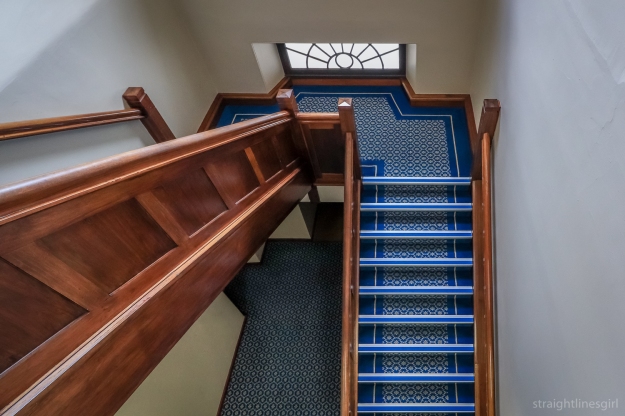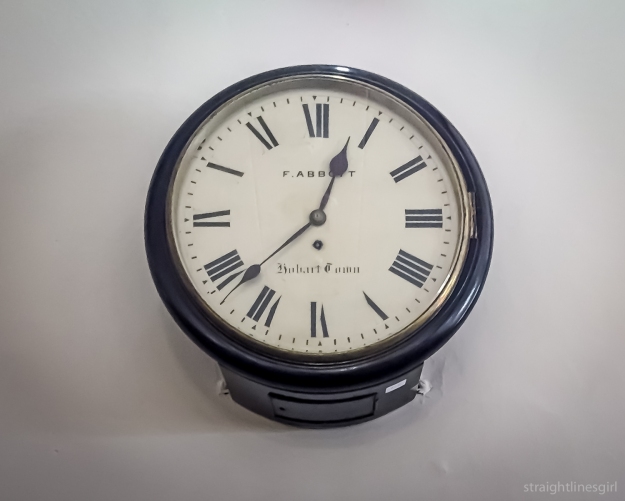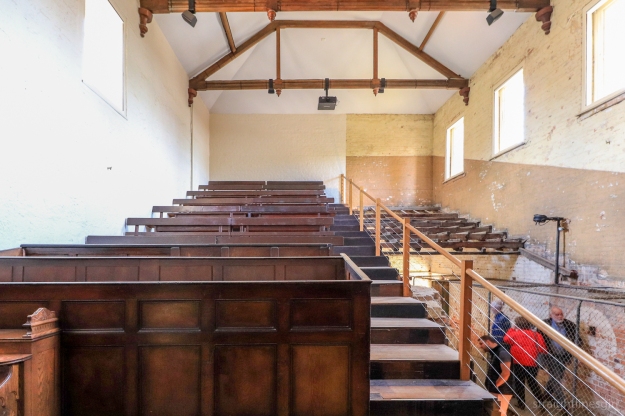Sunday 10 November 2019
part 1: supreme court
part 2: construction house & jarvis house
part 3: town hall, carnegie building & henry jones
part 4: riverfront motel
part 5: penitentiary chapel
After realising we wouldn’t have time to get into the old Hobart Savings Bank on Murray Street, Lil Sis and I made our way over the road to the Treasury Complex.

Treasury main entrance, 21 Murray Street (1841)
There are eight buildings in the complex, dating from 1824 to 1940. Before our tour, we went into the 1860 courthouse in Macquarie Street, which was used for civil cases until 1980 when the Supreme Court complex was completed. It’s now preserved as a model courtroom.

Treasury, Macquarie Street (L-R: Supreme Court Building (1860), Public Offices (1914), Supreme Court (1824))
The oldest building on the site is the 1824 courthouse, which is on the corner of Murray and Macquarie Streets. The second oldest is at the other end of the block, the 1835 Police and Convict Building. The main building in between those two was built in 1841 to join them together. This is where the tour started. Our guides informed us that there were supposed to be eight columns at the front of the building, but there was something of an outcry over using public money for such frivolities, so they cut it back to four.

Three of the four columns at the entry
Our guides also explained that, as we would be moving between buildings, we needed to look out for changing floor levels, which would indicate when we were changing buildings.

Changing floor levels
The 1824 building was designed by the Superintendent of Stonemasons, William Hartley Wilson, who my research tells me, also designed the Scots Church in Bathurst Street. Oh, and some old sandstone bridge in Richmond. William’s grandson, David, was the architect of a number of high profile buildings in Hobart, including the building that didn’t fit in that I mentioned in the Supreme Court post.

Stairs in the main building

More stairs
The building has served other purposes since the Court moved out in 1860, including Post Office and Telegraph Office (1860-1906), Tax Office and State Savings Bank (1906-1914) and the Tasmanian Tourist Bureau (1914-1975). Since 1975, it has been used as offices for Treasury and there is very little trace of its original use as a courtroom.

Repository of State Secrets, no doubt
The 1914 building, which sits next to the 1824 building on Macquarie Street, is an office building, constructed at the same time the 1824 building was redesigned to house the tourist bureau, which included quite significant alterations to its exterior. As we wound our way through the buildings I found myself entirely disoriented and not being sure exactly where I was. The changing floor levels and the different window widths were the main clues to us having entered a different building. I can certainly understand why many people consider it unsuitable as a modern office and our guides said that sometimes it was very hard to find people. (I’m sure I’d be quite happy if no one could find me but I’m also sure my manager would think otherwise.)

Seals of approval
We went through some of the senior managers’ offices and ended up in the 1835 Police and Convict Offices on the Davey Street side of Murray Street. It was designed by John Lee Archer. There were cells in this building originally, which were removed in 1860 and replaced with cast-iron columns and steel girders for support, so there is this bizarrely random collection of poles mingling with office partitions on the ground floor. (Refrains from commenting about office cubicles and gaol cells.)

Random collection of poles. Don’t ask me where we are. I’m totally lost by this point.
This was around the time the Police and Gaols Department moved to the Campbell Street Penitentiary, and Treasury moved in. Last year, the basement of this building, which contained a watch house, was also open to the public but not this year so we were glad to have seen it when we had the chance.

I think this was a clock from the Hobart Railway Station
We left via the main door of the 1835 building back into Murray Street, having had our question of “what is behind that door?” finally answered.
The Government is planning on divesting (their words not mine) the complex so there was information available on this process in one of the ground floor rooms so we went back inside to have a look at that and find out what was happening. We were glad to have done the tour today because who knows what the future holds for the complex.

Souvenir of an earlier divestment process



























